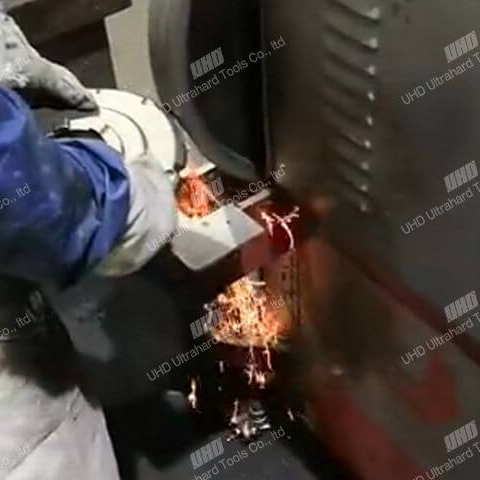
For manufacturers in metalworking, stone processing, or hard alloy grinding, tool life and cost efficiency are no longer just operational concerns—they’re strategic imperatives. That’s why more industrial buyers are moving away from traditional bonded diamond tools toward brazed diamond solutions. The shift isn’t just about durability—it’s a calculated move to reduce downtime, lower unit costs, and improve consistency across high-stress applications.
Brazed diamond tools use a metallurgical bond between the diamond grit and the tool body—typically using silver-based alloys at temperatures around 750°C. Unlike resin or electroplated bonds that degrade under heat and mechanical stress, brazing creates a stronger, more thermally stable interface. According to field tests by leading tool manufacturers, brazed tools last up to 40–60% longer than standard sintered or resin-bonded counterparts when used on materials like gray cast iron, stainless steel, and ceramics.
| Feature | Brazed Diamond | Traditional Bonded |
|---|---|---|
| Average Tool Life (hours) | 250+ | 150–180 |
| Change Frequency per Shift | ~1 time | 3–4 times |
| Unit Cost Reduction (%) | 22–35% | Baseline (no savings) |
In real-world scenarios—such as precision grinding of aerospace-grade titanium or continuous polishing of granite countertops—brazed tools maintain consistent cutting performance over extended periods. This translates directly into fewer interruptions, less operator fatigue, and better surface finish quality.
From 100mm to 180mm diameters, brazed diamond wheels come in both flat and contoured profiles tailored for specific tasks. For example, a 150mm curved wheel excels in profile grinding of molds, while a 120mm flat disc delivers superior edge integrity in thin-section machining. These design choices aren’t arbitrary—they reflect how modern production lines demand precision, not just brute force.

One European machine shop reported a 30% drop in scrap rate after switching to brazed tools for ceramic matrix composite (CMC) grinding—a material notorious for causing premature wear on conventional tools. “It’s not just about saving money per blade,” said their operations manager. “It’s about reducing variability in our output.”
As automation increases and lean manufacturing becomes standard, the ability to run longer without intervention is becoming a competitive advantage—not a luxury. In this context, “durability” isn’t just a feature; it’s a business enabler.
省下每把刀的成本,就是赚回每天的利润 ——这句话在德国工厂、美国 CNC 车间和阿联酋建筑设备制造商中同样适用。
Ready to optimize your grinding process?
Click to Match Your Application with the Right Brazed Wheel
